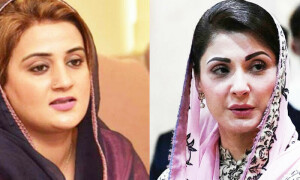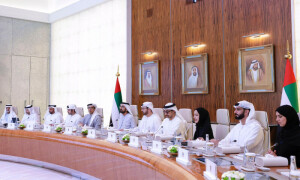THE Pakistani currency has been under immense pressure for several months now, with liquidity shortages disrupting the foreign exchange market as is evident from the slumping rupee and the widening gap between interbank trade and open markets. Many are surprised that the rupee continues to lose its value despite the restoration of the IMF’s bailout package. And yet, this trend was not unexpected. The markets had already factored in the IMF loan facility when the exchange rate strengthened by 10.7pc to 213.90 to a dollar in interbank trade on Aug 16 from a historic low of nearly 240 towards the end of July. It might have sustained that level — even improved a bit — if the ‘brotherly’ Gulf countries had made good on their commitment to provide $4bn in ‘safe deposits’ to help shore up the State Bank’s dwindling reserves. The bank’s measures, aimed at restricting imports at the cost of closure of some large industries to slow down the dollar outflow, haven’t helped the rupee either.
That the country’s exchange rate has again dipped by 4.5pc to 223.42 to a dollar from its strongest level in mid-August indicates that the rupee will remain under pressure — at least for some time. Indeed, the dollar shortage is the primary reason for the battering of the rupee. The recent market anxiety was instigated by surging headline price inflation that spiked to its 47-year high of 27pc last month, as well as the ongoing catastrophic floods that have caused enormous economic losses across the country and will likely further decelerate GDP growth in the near to medium term against the pre-flood IMF projection of 3.5pc for the current fiscal. Recessionary pressure building up in Europe and the US is also likely to hurt growth in countries like Pakistan.
Besides inflation and flood damages, the escalating demand for foreign currency from the open market by travellers, particularly due to a UAE requirement for Pakistanis to carry 5,000 dirhams on them, and the recent increase in food imports from Afghanistan and Iran through informal channels, are also worsening the rupee-dollar parity. No wonder the open market price of the US currency is far above the interbank rate, or in the range of Rs10 and Rs15 against a normal premium of up to Rs2. While the nation’s economic fundamentals remain weak, the deepening political uncertainty too continues to rattle the currency markets. Since the ouster of Imran Khan, the rupee has shed almost a quarter of its value in interbank trade. The rupee will continue to tumble against the dollar unless the country gets large cash injections in loans and flood-related aid from both multilateral agencies and bilateral lenders. With the country projected by the IMF to require external financing between $31bn and $39bn a year till FY26 to avoid default, the rupee’s road to stability and sustained recovery will be a long and arduous one.
Published in Dawn, September 8th, 2022









































